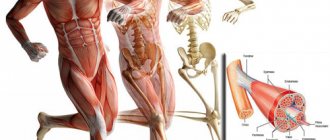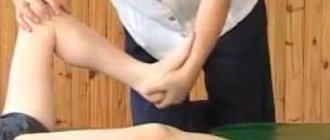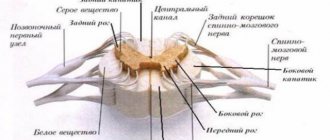One of the most effective and popular methods of physiotherapy is electrical muscle stimulation. A course of such procedures allows you to quickly restore damaged nerve endings, tissues and muscles. What is special about this technique? Who can use an electrical stimulator, and who should refuse such a procedure? You will find answers to all these questions in this article. To treat some pathologies, doctors prescribe a course of electrical stimulation. This procedure is carried out using special equipment that directs pulsed currents directly to tissues, organs and systems. Electrical muscle stimulation, as a rule, is part of complex therapy for diseases of the nervous system that limit the patient’s motor activity, lead to depletion of muscle tissue and loss of strength. The electrical stimulator directs an impulse to the diseased organ, causing immediate muscle contraction and motor excitation. At the same time, some brain cells also begin to work more actively. This treatment method prevents atrophy and sclerotic changes in muscle tissue, enhances blood and lymph circulation, and improves the permeability of blood vessel walls.
Indications
Home electrostimulator
Most often, an electrical stimulator is used to treat diseases of the nervous system. The procedure will be useful to all patients who have a significant decrease in the speed of nerve impulse conduction. Also, such therapy is indispensable for patients with paresis, paralysis, and traumatic damage to nerve endings. The main indications for conducting a course of electrical muscle stimulation are:
- Multiple sclerosis, Guillain-Barre syndrome, polyneuropathy and other ailments accompanied by spastic paralysis.
- Reduced sensitivity of the limbs after serious injury.
- Pathologies of cerebral circulation leading to central paralysis.
- Long-term treatment of complex fractures, in which the patient’s motor activity is limited. Typically, with such an injury, the patient's muscles are depleted. To prevent this from happening, doctors recommend using an electrical stimulator.
Electrical muscle stimulation will only be effective if this procedure is combined with other treatment methods.
Indications for the procedure
If indicated, electrical stimulation can be prescribed to both adults and children. In case of possible eye diseases, the result of stimulation is not the same and depends on 2 main factors: the age category of the patient and the duration of the pathology.
Note! For children under eight years of age, electrical stimulation is prescribed provided that the child is psychologically ready for treatment (the issue is discussed with parents individually).
For young children, electrical stimulation should be carried out with extreme caution and only with parental consent.
Diseases for which the effectiveness of electrical stimulation has been confirmed:
- myopia;
- deceptive myopia - a malfunction of the eye muscles, which leads to inaccurate vision of things located at different distances from the eyes;
- insufficient nutrition of visual fibers;
- asthenopia - eye fatigue or discomfort that quickly occurs due to the work of the organs of the visual system;
Asthenopia
- presbyopia (age-related farsightedness). Changes in eye refraction that occur as a person ages can be observed as early as 45 years of age. They manifest themselves in the form of difficulties when looking at small objects nearby, when reading small print;
- amblyopia – weakened vision that cannot be changed with lenses and glasses;
- preventive measures for people who regularly engage in work that requires visual strain;
- Regular eye strain while working at the computer for long periods of time. It can be observed in 55-80% of people who spend a lot of time on a PC. There is a decrease in the accuracy of vision, the appearance of “fog” in the eyes, a weakened ability to see things at different distances, doubling of objects, pain during the movement of the pupils, burning and dry eyes, squinting when looking at bright light, the appearance of false myopia;
- dystrophic retinal damage;
Peripheral chorioretinal retinal dystrophy (PCRD)
- strabismus;
- drooping eyelids;
- Retinitis pigmentosa is a hereditary retinal disease. It manifests itself as an unequal release of pigment around the circumference of the retina, a decrease in the field and accuracy of vision, and weakened vision in the twilight;
- congenital disease of elements of the visual system;
- cataract.
There are many indications for eye ES.
Advantages
It is not without reason that the procedure of electrical muscle stimulation is so popular. This technique has many advantages, namely:
- Effectively restores muscle performance.
- Not only treats the disease, but also has an analgesic effect.
- You can use an electrical stimulator without special training or medical education. Modern manufacturers of medical equipment offer a wide range of compact, inexpensive devices that can be used for home therapy.
Despite the fact that an electrical stimulator can be used at home, you should definitely consult a doctor before taking such procedures.
How does electrical stimulation occur?
During the procedure, a special device is used - a microprocessor ophthalmic electrical stimulator.
Note! To identify individual characteristics that need to be taken into account when performing an electrical stimulation procedure in a particular patient, it is worth undergoing an examination in advance.
Electrostimulators "Phosphen"
Once the characteristics of each patient that the electrical stimulator must cope with have been determined, one of its sensors needs to be attached to the patient's arm, and the other to the eyelid.
The entire stimulation process takes no more than 15 minutes. The patient does not experience pain or discomfort; he can only observe the barely flickering light. The procedure must be carried out every day, for each eye separately. The electrical stimulators most often used by doctors are Phosphen and Phosphen-M.
Electrostimulators "Phosphen" and "Phosphen M"
Flaws
Every patient should know that in addition to the advantages, electrical muscle stimulation also has obvious disadvantages. The disadvantages of the technique include:
- If the damage to the nervous system is very strong, such therapy will be ineffective and will not give the desired result.
- Physiotherapy using an electrical stimulator can only get rid of the consequences of the disease, but not the cause of the development of unpleasant symptoms.
Some people use special equipment that sends electrical impulses to train muscles and fight cellulite. However, professionals say that achieving the desired goal in this way will be quite difficult. If you want to lose weight or build beautiful muscles, it is better to sign up for a gym and start eating right. Exercises, of course, will require a lot of effort from you, but your figure will become slender.
Contraindications
The electrical stimulation technique also has some contraindications. It is not recommended to perform such procedures if:
- Rheumatism;
- Frequent heavy bleeding;
- Atrial fibrillation;
- Pathologies of the heart and blood vessels;
- Inflammatory and infectious diseases;
- Oncology.
If you have recently undergone surgery on tendons or muscles, you can do electrical stimulation only after 1 month. The use of electrical impulses can provoke an increase in the tone of the uterus, so pregnant women should also avoid this procedure.
Indications and contraindications for visual stimulation
| Indications | Contraindications |
|
|
Back
Back diseases, such as osteochondrosis, can cause a lot of pain and discomfort to the patient. Medicines help reduce pain, but do not eliminate the main cause of the pathology. To quickly and effectively get rid of back pain, doctors recommend taking a full course of special interstitial electrical stimulation. This technique was developed by the famous scientist A. Gerasimov. A needle with an electrode is inserted into the affected area of the body under the skin. Electrical impulses are sent directly to muscle tissue. This leads to normalization of blood circulation and dilation of small vessels. This treatment stops the process of destruction of cartilage tissue, removes salts from the body, and improves the functioning of nerve endings. The advantages of back treatment using the Gerasimov method include:
- Quick relief from pain and other unpleasant symptoms.
- The procedure is completely painless.
- There is no need to take additional medications that can cause allergic reactions and harm the body.
- Fast recovery.
Intramuscular electrical stimulation also has contraindications. It is not recommended to perform this procedure if you have any inflammatory disease, pathology of the cardiovascular system, oncology or pulmonary tuberculosis. In addition, the use of a pacemaker is prohibited during pregnancy and for people with an artificial pacemaker. In any case, you should definitely consult a doctor before the procedure.
Eyes
Modern ophthalmology also uses the method of electrical stimulation to treat visual impairment in adults and children. Doctors recommend using this type of physiotherapy for:
- Myopia or farsightedness;
- Asthenopia;
- Strabismus;
- Optic nerve atrophy.
A beam of light is directed onto the retina of the eye, and the eye instantly reacts to it. If vision is impaired, information from the outside world may enter the brain distorted. The electrical stimulator has a direct effect on the neuromuscular system of the eye, the muscles contract, and nerve conduction is normalized. The procedure is simple and painless and is performed in almost every clinic. The only contraindication to the use of an electrical stimulator for the treatment of eye diseases is the presence of an inflammatory disease or hemorrhage.
Brain
Some neuropsychiatric diseases of the brain can be effectively treated with a course of electrical stimulation. A special device sends nerve impulses that activate basic brain functions. The main advantages of such procedures are the absence of the need for additional medications and the elimination of the possibility of side effects. The main indications for a course of electrical stimulation of the brain are:
- Head injuries;
- Pathologies of the central nervous system;
- Neuroses;
- Hearing and vision impairments;
- Consequences of improper blood circulation in the brain.
Before starting the procedure, be sure to consult your doctor. The thing is that this technique has contraindications. It is not recommended to use an electrical stimulator for hypertension, atherosclerosis, high temperature, infectious or colds, or oncology.
Electrical stimulation (video)
Electrical muscle stimulation - description of the procedure and review of the most popular devices: Stimul 1, MIORYTHM-040-M2, Myovolna
Electrical muscle stimulation was invented in the mid-19th century in France. It is usually used in physiotherapy and rehabilitation therapy to restore the functioning of tissues, organs and systems, including the nervous system.
This method has an effect due to pulsed current, due to which there is directed excitation and contraction of any area of the muscles, and a decrease in the trophic function of nerve fibers.
The effect of current on the muscle tissue of the body
Electrical stimulation actively affects the body through pulses of different durations - from 0.5 to 300 ms, with a current strength of up to 5 mA (on the face), up to 100 mA (on the body) and a frequency of 10-150 Hz, which operate intermittently.
During the procedure, the person does not move, but this effect is identical to the normal work of the muscles during their activity.
The current, passing through the tissue, excites the cells and stimulates the active work of the muscles, and during pauses it relaxes.
Thanks to this rhythm of work, there is no irritating effect of current under the electrodes and the epidermis is not damaged due to prolonged electrical stimulation.
When an electrical current is applied to muscles or nerves, their bioactivity and the formation of spike responses are altered. The impulses provoke muscle contraction, which strengthens and activates them.
It’s also good that if a muscle is overstrained, electrical stimulation relieves such tension well. This method has no analogues in the world; it forces the muscle to work at 100%.
Electrical stimulation of the back muscles helps patients who have a stiff cervical, lumbar, diseased or curved spine, pain, loss of sensitivity, weakened muscles, and more.
This procedure is also necessary at the rehabilitation stage after spinal surgery; it will help strengthen the muscular corset of the spine.
If you choose the right one, electrical stimulation of the leg muscles will help restore the functioning of many functions:
- biceps femoris muscle – restores flexion of the knee joint;
- electrical stimulation of the calf muscle helps restore foot flexion function;
- peronalis muscle – dorsiflexion and abduction of the foot;
- pulsed currents directed to the rectus femoris muscle improve the mobility of the segment, as well as knee extension.
Thanks to myostimulation, it is possible to reach muscles located very deeply, which are difficult to load under normal circumstances.
For example, electrical stimulation of the thigh muscles helps actively fight osteoarthritis, including helping to recover after joint replacement surgery.
Current is also used for cosmetic purposes, for face lifting. The areas of the face and neck are quite difficult to train with regular exercises, but electrical stimulation of the facial muscles helps strengthen them and increase microcirculation in them.
The procedure improves blood supply and the functioning of a complex of metabolic and trophic processes. This includes activation of the systems and cells of the cerebral cortex.
The muscles are stimulated, the synthesis of nucleic acids occurs, including RNA, which delays the process of atrophy and sclerotic development in them.
During the procedure, the influence occurs directly on the muscle and through its motor nerve. Electrical stimulation accelerates oxygen utilization and reduces energy costs for contraction. After physical activity, lactic acid accumulates, and the influence of the current removes it from the muscles, relieving pain.
Electrical stimulation of arm muscles
Electrical stimulation of the arm muscles restores the following functions:
- influence on the deltoid muscle, helps to resume the work of shoulder abduction to the side, back and forth;
- extensors of the hand and fingers, restore their extension function;
- electrodes located on the triceps muscle affect the extension of the arm at the elbow joint;
- impact on the biceps muscle, will help bend the arm at the elbow joint;
- points on the flexors of the hand and fingers will help bend them.
How does the method work?
Electrical and photo stimulation
Under pressure on the eye muscles, the transmission of nerve and muscle impulses begins to improve. This makes it possible to achieve a normal state of muscle tone. The effect on the optic nerve and retina increases the number of structural connections in the brain and builds a powerful and lasting feedback. There is a reduction in the number of neurons that are in a “frozen” position in various layers of the visual system. Nerve endings awaken, and a focus of excitation is created in the occipital cortex of the brain.
Under the influence of a light electric current, metabolism begins to work better, which leads to the resumption of the restoration process of cells of the visual system.
Electrical stimulation accelerates metabolism and activates neurons, resulting in better transmission of information from the organs of vision to the brain.
Also in cells, the connections between collagen and protein are activated, cell metabolism improves, which helps accelerate the transport of elements through them, and their nutrition is stabilized. In parallel with this, the launch of local and systemic blood circulation begins, which also has a positive effect on the nutrition of eye tissue.
First, the effect of electrical stimulation affects the functioning of the ciliary muscle, which is responsible for focusing the image on the retina, as well as the general condition of the rods and cones. Changes in the functioning of neurons in the visual organ system are observed. At the level of the inner shell of the eye, this concerns the awakening of functionally suppressed components and the resumption of nutrient metabolism. At the level of nerve endings, the permeability of nerve tissue increases.
How does electrical stimulation work?
Electrical stimulation does not ignore the subcortical centers. Studying the views of most specialists, we can say that there is no relationship between the result of stimulation, the nature of the disease of the visual organs and the direct dependence of the results on the initial state of vision. These opinions suggest that for various types of disorders of the visual organs, there is a “universal” plan for establishing the work of the visual departments and general elements of the progression of diseases of the visual organs, on the influence of which the initial result of stimulation depends.
Among the possible mechanisms of electrical stimulation, one can highlight the reorganization of the functioning of the visual organs, which is aimed at increasing the effectiveness of the interconnection of neurons and at the formation of a state that is inherent in the ophthalmological standard.
Electrical stimulation accelerates metabolism and activates neurons, resulting in better transmission of information from the organs of vision to the brain.
Another theory is reflexology . Its essence lies in influencing the visual system through biologically active points used in acupuncture. During experimental electrical stimulation of active points in a mode that does not contribute to the appearance of phosphene, a chance was found to improve the functioning of the visual organs in patients with retinal pathology.
In addition, the possibility of affecting vision by normalizing the somatic situation as a result of activating the iris of the eye, where, according to representatives of iridology, there is a projection of human organs, is not refuted.
ESOM-micro
How does the procedure work?
- Before electrical stimulation, the body is examined and spastic muscles are found, the degree of increase in muscle tone is determined and the presence of fibrous changes is recognized;
- If the procedure is intended for the face, then you need to remove makeup and degrease the skin;
- The specialist can then apply a mask or conductive gel to the skin as well as the electrodes. This depends on the device that supplies the current, as well as on the conductivity of the current by the body;
- Electrodes are applied to those areas where motor points are located - hips, limbs, abdomen, chest, back, face. Stationary electrodes are fixed or the skin is treated with movable electrodes;
- It is better to carry out such a procedure in a medical center, where a specialist can install the electrodes exactly in the places where they need to be. He will also be able to select the current strength that corresponds to the degree of muscle damage and suits the individual sensitivity of the patient;
- Having selected the required current strength, frequency and duration, a session of electrical stimulation is carried out;
- Remove the electrodes and cleanse the skin of the gel.
Session duration
The duration of the procedure is determined by the doctor, depending on the symptoms, the nature of the process, etc., usually it does not exceed 40 minutes.
The duration of treatment is usually from 15 to 30 sessions, they are carried out every day or every other day.
The duration of the facial procedure can last from 10 to 20 sessions. The procedure is done every couple of days, and courses are carried out about once a year.
The muscle or nerve is stimulated for 2-3 minutes, and then a break of 10 minutes is taken. The time frame for achieving the required result depends on the disease, characteristics of the body, condition, and the presence of extra pounds.
Electrical stimulation at home
Today you can hear about portable devices everywhere. Some can be powered by electricity, while others can be battery-powered.
You can use such devices to maintain tone. Their power is low and they cannot have a full impact.
Electrical stimulation at home will help relieve fatigue after a hard day, tighten some areas of the body, relieve or reduce pain. But such a device will not help overcome illnesses or correct the condition of the muscles.
You can also be treated with this drug at home, after being prescribed and taught by a doctor.
Devices for electrical stimulation
All devices have electrodes that are attached to the body. The device has a main unit in which a current of a certain strength and frequency is generated. Each muscle group has its own mode of operation.
Devices are classified into professional ones, which are used in clinics, beauty salons, and low-power ones, for home use.
To restore muscles, sinusoidal currents of high frequencies are used, which are modulated by low frequencies. These include devices of the “Amplipulse-4, 5” type, which has a wide range of treatments, and the “Stimul-1” type, designed to stimulate such muscles.
If the electrical excitability of the muscles is reduced due to degeneration or disease of the motor nerve, stimulation is carried out with the same currents, only they are delivered in a straightened mode. Here the electrodes on the motor point are connected to the negative pole. Such currents are produced by the devices “UEI-1” and “Neuropulse”.
Other devices for electrical muscle stimulation: “Movolna”, “Diagnostim”, “NET”, “MIORI”, “Stersodnnator”, “Tonus-1” and others.
Stimulus 1
This device is intended for the complex treatment of injuries and diseases of the musculoskeletal system, various paralysis, cuts, poor posture, scoliosis, flat feet, for strengthening muscles, eliminating fat layers, and during intense physical activity.
This device is used in clinics and various medical institutions.
The Stimul-1 device generates radio pulses in continuous sending mode. The amplitude of the messages is regulated and its period of rise and fall is adjusted.
The mechanism of action consists of transistors and microcircuits. The kit includes electrodes of various shapes made of hardened carbon fabric, electrical holders and other accessories. The device is operated at air temperatures from +10 to +35ºС and at ambient humidity up to 80%, at a temperature of +20ºС.
Characteristics of the Stimul-1 device
| Sinusoidal frequency | 2000 Hz ± 10% |
| Maximum average current value with active load resistance | 1000 Ohm - 30 mA |
| The frequency of repetition of radio pulses is equal to the frequency of the supply network; | 10 ms ± 20% |
| Duration of radio pulses | |
| Radio pulses are generated in continuous mode and burst mode | |
| Working mode | up to 3 min |
| Continuous operation of the device | up to 6 hours a day |
| Power consumption is less | 40 W |
| Network consumption | 220V±10% |
| Current frequency | 50 ± 0.5 Hz |
| Degree of protection against electric shock | II class |
| Dimensions | 108x300x315 mm |
| Weight of the device without accessories | 4 kg |
Myovolna
The muscles are stimulated with this device to replenish the deficiency of nerve impulses, increase blood supply to tissues and organs, suppress pain pulsation and improve the functioning of the lymphatic system.
During electrical stimulation, impulses from nerve endings are transmitted to muscles and cause them to contract. Blood and lymph flow improves, metabolism is stimulated. The device is also used to tighten facial muscles.
“Myovolna” provides a mode for moving the electrical stimulation zone during stable parameters stimulating impulses.
Thanks to this, sequential stimulation of different tissue areas is carried out along the path of innervation - the direction of blood flow and lymph circulation.
MIORHYTHM-040-M2
This drug is used in the medical, cosmetic and sports fields. "MIORHYTHM-040-M2" has an electrical stimulator with a separate power supply and a set of accessories.
Description of the method
Electrical muscle stimulation is an internationally recognized clinical method of physiotherapy in specialties such as orthopedic and neurological rehabilitation. When applied to a central or peripheral partially damaged nerve, electrical stimulation can induce a muscle response in patients with limited or lost muscle activity. This method is a complement to physical therapy and should be combined with active training, strength and coordination exercises. The method is simple and suitable for treatment both in a hospital and on an outpatient basis at home.
Operating principle
NMES stimulates the motor nerves to generate muscle contractions, as opposed to low frequency TENS which creates small muscle twitches. NMES also stimulates A-beta nerve fibers (as does TENS), which has an analgesic effect.
Examples of indications
- restoration of quadriceps function after surgery
- maintaining or increasing the range of active movements
- capillarization
- reduction of muscle atrophy/hypotrophy
- maintaining muscle strength during immobilization
- prevention of loss of muscle strength after surgery, for example on vastus medialis
- reduction of spasticity, such as reciprocal inhibition of the flexor muscles of the arms in patients with hemiplegia
- training after partial peripheral nerve injury with reinnervation symptoms such as plexus injury
- peroneal muscle stimulation
- incontinence treatment
- anesthesia
- warm-up
- increased muscle strength
- recovery
Treatment by NMES method
Installation of electrodes
Correct placement of the electrodes is extremely important to achieve good results. The muscle contracts due to stimulation of the motor nerve. The motor point is the area on the skin that is closest to the point where the motor nerve enters the muscle. This is the most advantageous location for inducing contraction using electrical impulses. The NMES programs of Cefar stimulators generate a symmetrical biphasic wave, that is, the polarity is constantly changing. This means that both electrodes are equally active.
There are different methods for positioning the electrodes. The most optimal way is to install a pair of electrodes above the elevated area of a given muscle. By installing one electrode over the motor point of the muscle, you will get the strongest possible muscle contraction without discomfort. By placing electrodes over the motor points of different muscles, large muscle groups can be effectively worked.
What size electrodes should I choose?
A larger muscle group requires a larger electrode area. For a small muscle group, small electrodes are better suited, as they are more specific, which provides a higher current density (mA/cm2). Large muscle groups may also require dual-channel stimulation, which uses four electrodes simultaneously.
What pulse frequency and duration should I choose?
NMES typically operates at frequencies of 20-120 Hz. To increase blood circulation, choose frequencies up to 10 Hz. The goal is to induce vibrations, not contractions. Adjust the pulse duration relative to the amount of energy in each pulse. When stimulating a small muscle group, a short pulse (say 200 µs) is usually sufficient, while a long pulse (eg 400 µs) is used for a large muscle group.
NMES 20-70 Hz
1. Rise 2. Stimulation period 3. Decline 4. Pause
The illustration above demonstrates electrical stimulation of a muscle. Begins with a lifting phase (1), during which the contraction gradually increases, reaching a maximum contraction in the stimulation phase (2). In the decline phase (3), stimulation gradually weakens and enters a rest phase, in which stimulation stops or is at a moderate level (active rest). Active rest prevents muscle injury and prepares the muscle for the next contraction. Stimulation with regular pauses is called intermittent.
What sensations should stimulation cause?
The purpose of NMES is to induce muscle contractions. Increase the amplitude above the somatosensory barrier until you see a motor response. The patient often experiences an electrical contraction greater than a voluntary contraction. But contractions should not cause discomfort.
Testing the electrode installation position.
The motor point finding electrode and gel help determine the optimal location for electrode application. By sliding the movable electrode over the surface of the skin, you find the position with the maximum and most comfortable muscle contraction. Often the patient needs to get used to the stimulation, and the first sessions may not reach therapeutic intensity. During the course of treatment, the intensity of stimulation should gradually increase. At the first session, a short session may be conducted to determine the patient's response. Excessively strong muscle contractions caused by electrical stimulation can injure a muscle that is not prepared for the load. A gradual increase in load and regularity of exercises ensure a good treatment result.
To achieve good results, NMES can be combined with other types of muscle training. Muscle stimulation can act in both the concentric and eccentric phases of movement, or only in one of them. It depends on how you combine stimulation with voluntary movements.
What should be the duration of treatment?
Depending on the condition of the muscles and the patient's rehabilitation phase, treatment can last from 5 to 60 minutes and be repeated three times a week to twice a day. In order to intensify the treatment, you can gradually increase the duration of stimulation depending on the pause. You can also increase the amplitude, frequency and/or duration of the pulse.
Denervated muscles.
Stimulation of denervated muscles differs from stimulation of muscles with preserved innervation.
If the innervation of the muscle is preserved, you can stimulate through the motor nerve, but if the muscle is denervated, you must stimulate the muscle fibers directly to induce contraction. The purpose of stimulating denervated muscles is to maintain their contractile units while awaiting possible reinnervation. To generate a contraction, the pulse duration is 100-300 ms. Rectangular pulses are used for completely denervated muscles, while triangular or trapezoidal pulses are used for partially denervated muscles. This helps to separate fibers with preserved innervation and denervated ones.
Switch.
To adjust the duration of the pause and stimulation periods, you can use the switch during electrical stimulation. The switch is especially practical when electrical muscle contractions are combined with voluntary contractions. The result is effective individual treatment.
Installation of electrodes.
Here are some examples of electrode placement for the most common indications. For NMES there is no difference in the position of the red and black electrodes.
Shoulder – subluxation and abnormal abduction
Indication:
1. Functional subluxation of the shoulder after stroke.
2. Reduced function of the shoulder muscles after a fracture, dislocation, etc.
Installation of electrodes:
Place one electrode on the middle of the deltoid muscle and the other on the supraspinatus muscle. The position of the electrodes and the type of stimulation may vary depending on the type of subluxation.
Shoulder area
– dysfunction of the triceps
Indication:
1. Decreased triceps function, for example after stroke.
2. Fracture in the elbow joint.
Installation of electrodes:
Place one pair of electrodes on the triceps. Torso, lower back – training the spinal erector muscles
Indication:
Pain/weakness in the lumbar region
Installation of electrodes: Install two pairs of electrodes in the lumbar region paravertebrally along the erector spinae muscles on both sides. Torso – training the abdominal muscles
Indication:
decreased function of the rectus abdominis muscles.
Installation of electrodes: Place two pairs of electrodes on the rectus abdominis muscles on both sides. Forearm – impaired strength/hypotrophy of wrist extensors
Indication:
1. Impaired wrist extension and/or flexor spasticity after a stroke, etc.
2. Decreased function of the wrist extensors after a fracture, etc.
Installation of electrodes:
Place a pair of electrodes over the wrist extensor muscles. Knee joint - instability
Indications:
1. Postoperative period after plastic surgery of the anterior cruciate ligament of the knee joint. 2. Extensor contracture of the knee joint.
Electrode placement: Place one pair of electrodes over the quadriceps. Knee joint – muscle imbalance
Indication:
Muscle imbalance of the medial head relative to the lateral head of the quadriceps.
Installation of electrodes:
Place one pair of electrodes over the medial head. Hip area – Positive Trendelenburg sign
Indication:
1. Positive Trendelenburg sign. 2. Decreased function of the hip abductor muscles after central disorders such as stroke.
Installation of electrodes:
Place one pair of electrodes over the hip abductor and flexor muscles. Lower leg area – dysfunction of the Achilles tendon
Indication:
Dysfunction of the Achilles tendon.
Electrode placement: Place one pair of electrodes over the calf muscle. Lower leg area – decreased strength of the foot flexors
Indication: Decreased dorsal flexion, spasticity.
Electrode placement: 1. One electrode over the exit of the peroneal nerve just below the head of the fibula, and the other on the anterior surface of the tibia. 2. Both electrodes on the anterior surface of the tibia. Contraindications
1.Patients with a pacemaker, intracardiac defibrillator, or other active implants should not be treated with NMES methods. 2. Perform the exercise carefully in the first trimester of pregnancy. 3.In a pregnant woman, never connect a pair of electrodes across the abdominal cavity. 4. Do not perform stimulation near the carotid glomus, in the projection of the throat near the carotid artery, as this is dangerous due to a drop in pressure. 5.Do not perform stimulation during periods of acute inflammation and acute blood loss. 6.Use extreme caution when stimulating patients with lymphatic disease. 7. If there are contraindications to loading a tendon or muscle.
Go to CATALOG
The human body is capable of self-healing, but sometimes (after injuries, surgeries) this can take quite a long time. For successful and faster recovery in medicine, various are used. Therefore, we will further analyze what electrical stimulation of the back muscles is, how it is useful and how it is carried out.
The technique is widely used for the rehabilitation of patients after various types of illness, with disorders of the functioning of the nervous system, and with muscle hypertonicity.
Why is the procedure useful?
The benefits of current stimulation sessions are obvious. Thus, the use of this technology allows you to achieve the following results:
The procedure shows high results in therapy
- Prevention of muscle tissue atrophy.
- Restoration of nutrition processes and elimination of metabolic products.
- Reducing pain of any localization.
- Increased adaptation and muscle fatigue limit.
- Promoting the process of tissue regeneration.
Also, regular stimulation ensures the restoration of “feedback” with the cerebral cortex.
Thanks to this, the nervous regulation of muscle tissue contractions is gradually restored. This is a great achievement in the treatment of severe pathologies (paralysis, paresis).
Electrical stimulation: using electrical impulses to combat blindness
People with poor vision have few opportunities to improve their vision. Until recently, the main method of correction was glasses. Then lenses came into use. Now there are many offers on the medical services market - prompt assistance; It is most often used for myopia, farsightedness and cataracts. For some other eye diseases, surgery is also possible. But more often they resort to medicinal forms of treatment.
Millions of people around the world suffer from partial blindness caused by glaucoma, stroke or traumatic brain injury. For many years, vision loss was considered irreversible. But now a new treatment can improve vision and vision.
Filling the void of non-invasive offerings in the ophthalmology field is quite active. However, so far they have practically not reached the consumer of these medical services.
Options
Our free medicine offers little, but in the private or sanatorium sector you can get various hardware treatments for myopia, amblyopia, age-related changes in vision and eyes, glaucoma, retinal dystrophy, optic nerve atrophy, paresis, retinitis pigmentosa and others.
There are various methods of treating eye diseases using physical factors that stimulate the functioning of the organ of vision:
- Color therapy
- Pulse
- Lasotherapy
- Magnetotherapy
- Electrical stimulation
- Electro or vacuum massage of the eye area
- Ultrasonic (acoustic) impact
- and their simultaneous variations, for example, color pulse or electromagnetic stimulation.
In this article we will deal with electrical stimulation of the organ of vision.
Sleepers: Science and Cells
Electrical stimulation has a long history in ophthalmology and was considered useful as early as 1873, but has been forgotten. Around 2000, it became popular in neuroscience to use direct current to stimulate the brain. However, this process of “neuromodulation” was first explored in other fields outside of vision, such as traumatology, diagnostics, and especially neurology. During this time, the experience of doctors and researchers has shown that specific electrotherapy methods can lead to significant restoration of lost vision, as well as its preservation for a long period.
This is how “normal vision” works: light hitting the retina of the eye is transformed into nerve impulses. The optic nerve then carries the impulses to the brain. The brain interprets and analyzes these impulses. The eye is like a “microphone”, and the brain is an “amplifier”. This means that the brain plays a key role in vision. There are many diseases that can affect this nervous system that cannot be improved by prescription glasses.
In the event of partial loss of vision as a result, for example, of a blood supply disorder, the nerve cells are damaged (damaged or destroyed). This can occur at various locations along the visual system, the retina, the nervous system, or the brain as visual processing is disrupted along the way. It turns out that there are areas where all the cells have died. And there are other areas that remain completely undamaged. And there are still other areas where some cells survived while others died. Typically, these few remaining cells are not enough to control normal functions because they are “ignored” by the brain. That is, the brain focuses on undamaged regions and neglects partially damaged areas. Using electrical stimulation, activity is artificially generated in partially damaged tissue areas. When the brain receives these signals, it strengthens them by activating dormant cells.
Although the exact mechanism of action of electrical stimulation of the organ of vision has not yet been created scientifically, numerous studies conducted in recent years show that electrical stimulation helps the eyes function as if they were healthy:
- re-stimulate and activate dormant retinal cells (cells are like batteries - when they lose energy they become sluggish and inactive),
- increase the ability of cells to get rid of waste that interferes with the flow of energy, nutrients and communication,
- increase blood supply to the area. By increasing blood flow to the area, cells and tissues still living can be nourished and renewed.
Kinds
There are currently several methods based on the potential to improve vision and brain function and/or maintain optimal function through the administration of external electrical current pulses of varying shapes and amplitudes through electrodes placed on and/or around the eyes.
1. Transcorneal electrical stimulation. A conductive contact lens is placed on the patient's cornea and connected to an electrode, which in turn is connected to an electrical signal generator. The magnitude of the current is adjusted until the subject experiences the maximum comfortable threshold. Stimulation takes place under constant medical supervision.
2. Transorbital electrical stimulation. In this case, one to several active stimulation electrodes located near the eyeball can be used. The passive electrode is located on the wrist.
3. Transcranial electrical stimulation. Electrical signals are sent to the brain through electrodes placed on the head. This type is more commonly used to treat a variety of neurological conditions, including traumatic brain injury and diabetic neuropathy.
4. Electroacupuncture combines traditional acupuncture with low-level electricity (through wires attached to the needles) to increase stimulation of key acupuncture points around the eyes.
These four methods, of course, are carried out only by specialists in a medical institution. For many, it is more convenient to have a device for home use. And there is one of a kind - DENS glasses. They can be attributed to the method of transorbital electrical stimulation. The glasses have scientifically spaced built-in small electrodes that are precisely placed around each element of the eye. This unique invention in ophthalmology makes it possible to provide prevention and therapeutic effects for the entire visual organism. More about this device here https://www.medtehno.ru.
Who can benefit
Indications for treatment include various forms of visual impairment, manifested by decreased visual acuity, various types of visual field defects, or a combination of both. According to the cause of vision loss, the following diseases and consequences are indications for treatment:
- Damage to the optic nerve caused by glaucoma, ischemic damage, trauma, tumor, hydrocephalus, neuritis, multiple sclerosis, neuropathy, etc.
- Damage to the visual pathway in the brain, as well as the visual cortex in the occipital hemispheres of the brain due to an ischemic attack, cerebral hemorrhage, trauma, tumor, inflammation.
- Amblyopia (lazy eye).
- Strabismus.
- Retinal diseases: retinitis pigmentosa, Stargardt disease, age-related macular degeneration, dystrophic chorioretinitis, angiopathy or the initial stage of retinopathy in diabetes.
- Hemanopia after a stroke, injury or brain tumor.
- Myopia.
There are factors that significantly limit your ability to improve your vision. This:
- Blindness or only perception of light
- Unresolved cause of optic nerve damage in uncompensated hydrocephalus or multiple sclerosis with frequent attacks causing new optic neuritis
- Serious morphological lesions of the retina
- Visual disturbances caused by deep (severe) anatomical lesions of brain structures
- Long-term vision loss combined with severe visual impairment.
Electrical stimulation is contraindicated in patients with pacemakers or pregnant women, in the presence of acute inflammation, mental illness, or very high intraocular pressure. The presence of a neurological disorder such as epilepsy requires prior consultation with your doctor.
We are about health
Devices for the procedure
All devices for electrical muscle stimulation have a main unit in which a current of the required frequency and strength is generated, as well as electrodes attached to the body.
Reference.
Each device has different operating modes necessary for a specific muscle group.
Devices are divided into several types according to their purpose:
- professional
- used in medicine and cosmetology; - low-power
- intended for use at home.
Devices are also distinguished based on the nature of the outgoing currents:
- “Amplipulse-4.5”, “Stimulus-1”
- for restoration and stimulation of muscles using sinusoidal currents of high frequencies, modulated by low frequencies. - “Neuropulse”, “UEI-1”
- used for reduced electrical excitability of muscles. Currents flow in rectified mode.
Various devices have been developed for stimulating muscles with current.
There are many other devices in medicine, each of which has its own application characteristics: “NET”, “Tonus-1”, “Myovolna”, etc.
What is TES
American and European scientists began to actively study the effect of transcranial brain stimulation on human cognitive abilities relatively recently - and have already received encouraging results. There are many types of TES, but the general idea is this: neurons in the human brain in the area responsible for specific functions are activated by a small external current without surgically invading the body.
The most popular types of such stimulation are placing the patient’s head in an alternating magnetic field created by a special installation (TMS), or placing electrodes on the head, which are supplied with a small and almost imperceptible direct current of 1–2 mA (tDCS). And if a magnetic installation requires a place in a specialized clinic and a lot of money to purchase, then for electrical stimulation of the brain with low currents, several electrodes, salt water and a battery are enough.
Answer questions about love, pass electricity through the brain: 6 experiments in which you can take part
In the United States, transcranial stimulation devices are considered an experimental technology and are not approved by the FDA (Food and Drug Administration), but the laboratory results are causing great interest and optimism among scientists. TES shows positive results on people whose brain functions are impaired in one way or another - patients with severe depression who are not helped by medications, patients after stroke and brain injury, people with drug and alcohol addictions. In experiments on healthy people, the result varies depending on the area where the electrodes are installed: TES temporarily improves memory, empathy, mathematical calculations, reduces anxiety, increases attentiveness and concentration, and one of the latest studies showed improved creativity. But there are also plenty of other studies where no significant results were obtained.
Wired magazine, in its article “Read this before zapping your brain,” pointed out the main problems of studying TES: experiments rarely use groups receiving placebo therapy, since it is quite difficult to emulate the presence of current, and the groups of participants are too small. In addition, the human brain is very complex and individual; in right-handers and left-handers the brain is zoned differently. The brains of children and adolescents under 20 years of age are also in the process of developing neural connections, so the results obtained are unstable, and the topic needs more serious study.
Scientists do not share the enthusiasm of the autodidacts, view home treatment with concern and issue special statements to stop the uncontrolled use of TES at home. In response, skeptics joke: “Since I overclock my brain without additional cooling, if it overheats, will it simply turn off - or will it immediately burn out?”
© SebbyMeister/T&P
Electrical stimulation at home
The technique is quite simple to perform, so you can perform electrical muscle stimulation at home
.
The session flow includes several stages and looks like this:
Can be used at home
- the electrodes are moistened with water and placed on the affected muscle tissue and secured with bandages;
- wires are connected;
- a suitable program is launched on the device;
- the current strength increases in stages, 3-4 minutes after the start of the electric shock, until muscle contractions are felt;
- after the end of the session, the device is turned off and the electrodes are removed;
- The skin in the area where the electrodes are applied is treated with a tonic to moisturize.
It is imperative to study the instructions for the electrical muscle stimulator, which will ensure the correctness of the procedure and the effectiveness of the treatment. If the technique of performing sessions is not followed, side effects may develop.
How often can the procedures be done?
How often can you do electrical muscle stimulation?
?
Treatment with a similar physiotherapeutic method is carried out 2-3 times a week
, however, a session is allowed every other day (depending on the indications).
Reference.
The therapeutic course includes 10-20 sessions.
The duration of the procedure should be approximately 20-40 minutes.
A repeat course can be completed
no earlier than 1 month
after the previous one.
Side effects
There are practically no side effects
There are practically no side effects of electrical muscle stimulation.
The only thing that can be noted is a feeling of muscle discomfort during the session and after it.
Also, an inflammatory reaction may occur at the points of contact between the skin and the electrodes.
In order to avoid such undesirable reactions from the body, the patient must monitor his well-being during sessions. If discomfort occurs, even minor, the patient should inform the doctor.
The list of contraindications to electrical muscle stimulators is extensive. When prescribing therapy, it must be taken into account by the doctor.
Important!
The procedure may accelerate the progression of some diseases, leading to undesirable consequences.
It is prohibited to carry out the procedure in the presence of the following circumstances and diseases:
Has a large list of contraindications
- oncology;
- infectious diseases;
- arterial hypertension;
- epilepsy;
- hyperthyroidism;
- blood pathologies;
- heart failure above degree 2;
- active form of rheumatism
- presence of pacemakers;
- formations of a benign nature;
- atrial fibrillation;
- phlebitis, thrombophlebitis;
- violations of the integrity of the skin (abrasions, wounds, cuts);
- condition after suturing muscles, tendons, nerves (for 1 month).
This method of treatment should not be used in pregnant women.
, since the procedures can cause an increase in uterine tone, which can result in miscarriage or premature birth (depending on the stage of pregnancy).
Electrostimulation devices versus CPAP machines
Neurostimulation of the hypoglossal nerve resulted in a significant reduction in all symptoms of sleep apnea. However, similar results (and often a more pronounced therapeutic effect, and in a shorter time) can be achieved through CPAP therapy. In addition, the following can be said in favor of the latter method.
- CPAP therapy, unlike implantation of a neurostimulator, is a non-surgical, completely bloodless treatment method. And although the implantation of such a device is considered a fairly simple procedure, it cannot insure the patient from potential postoperative complications and the need to take painkillers. In addition, the operation is performed under general anesthesia, which is a serious contraindication for a number of patients.
- Both methods have side effects. But in the case of CPAP therapy, their list is well studied (dry mouth, skin irritation under the mask, etc.), they are not dangerous, and a somnologist is most often able to find a way to eliminate them. When analyzing the therapeutic possibilities of neurostimulation, partial temporary paralysis of the tongue, numbness of the body of the tongue, and pain during adjustment of the device were noted among the side effects. Due to the insufficient number of studies, this list must be considered incomplete, i.e. it may include other side effects.
- One of the unpleasant features of implantable devices is the possibility of their failure. This, by the way, happened several times during the above-mentioned study. At the same time, replacing wires or implants required additional surgical intervention. The CPAP machine can also break down. However, its repair does not imply hospitalization of the patient.
- Patients showed a fairly high level of response to neurostimulation. But in 3 out of 13 patients the therapeutic effect was not noted for unknown reasons. The method of creating positive pressure in the airways has been studied much better, therefore, it allows us to give a more reliable prognosis for treatment.
- A neurostimulation device requires daily recharging, while a CPAP machine runs on mains power.
- Today, neurostimulation is a much more expensive technique compared to CPAP therapy.
It should be noted that none of the volunteers who took part in the experimental project expressed a desire to stop the study and remove the device. Patients found the therapy quite acceptable and expressed their willingness to continue using the device. At the same time, adherence to CPAP therapy, despite all the advantages of the method, remains a serious problem. Many experience emotional discomfort due to the need for such treatment. Others interrupt therapy because they were unable to adapt to sleeping with a mask.
It is too early to talk about the ability of devices for electrical stimulation of the hypoglossal nerve to displace CPAP equipment from the market. Firstly, different manufacturers use different stimulation mechanisms in their developments, which does not allow an objective assessment of the effectiveness of the method and once again emphasizes its experimental nature. Second, there are only a few documented scientific studies of the effectiveness and safety of electrical stimulation, all of which were conducted on relatively small groups of people. This indicates the need for larger studies.
Electrical stimulation of the hypoglossal nerve is a promising and promising technique for the treatment of obstructive apnea. However, it should be noted that all studies conducted so far call this method auxiliary, i.e. suitable in cases where the patient has obvious intolerance to CPAP therapy. In addition, this treatment is still largely experimental, and further research is required for the method to become part of everyday medical practice.










